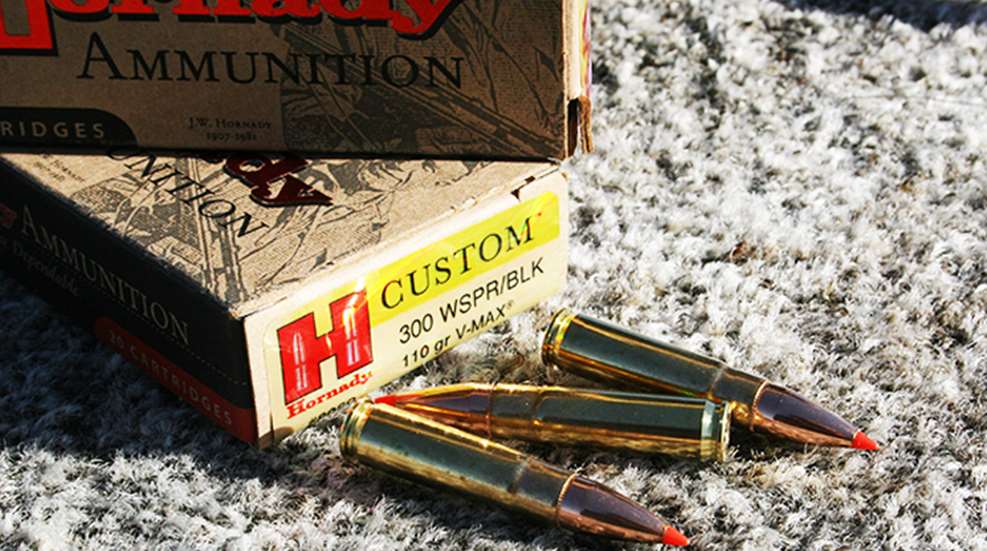
How does the .300 Blackout perform on game? Going back 120 years, the logic behind increasing power was simple: Increase bullet mass as velocity was somewhat limited at or below 2,000 feet per second (fps), due mostly to propellant technology of the time. As propellants developed, they ushered in smaller and more efficient bullets and cartridges that were faster. From cars to airplanes to boats, the American way is to make things bigger, faster and stronger.
Cartridge development was no exception. From the 1950s through the early 2000s, "wildcatting" and new cartridge development was focused on making bullets fly faster, farther and more accurately than ever. In the mid 2000s, Hornady began to set a design trend of well-balanced, elegant and sophisticated cartridge designs, the charge led in large part by Dave Emary. Another Hornady ballistician developed a mathematical equation that was later named HITS or Hornady Index of Terminal Standards, and the company has this very useful tool on their excellent online ballistics resource.
HITS takes into consideration bullet mass, sectional density and impact velocity, and creates a number that corresponds with a classification of game based on weight and body structure. This is a much more evolved method of determining cartridge efficacy than simple kinetic energy. All this information seems a little "left field," until one considers that these are all factors that JD Jones took into account when he developed the .300 Blackout in the early 1990s, decades ahead of its time.
The .300 Blackout has two very different personalities, the first being supersonic bullets. The .300 Blackout is capable of driving bullets up to 150 grains in excess of 2,000 fps, which is more than enough velocity to get reliable expansion at moderate distances. Generally, the .300 Blackout is loaded with 110- to 125-grain bullets for hunting. Velocities range from 2,200 to 2,350 fps, combined with the bullet weight and expansion characteristics delivering a very effective performance on game up to and including mule deer.
The second side of the .300 Blackout's personality is subsonic. Typically, subsonic loads feature heavy bullets-200 grains and heavier-loaded to velocities below 1,080 fps. These loads are not as effective for hunting, as the bullets generally do not expand. Some rely on heavy bullets to tumble upon impact, but that is not reliable and should not be counted on for consistent terminal performance. The trajectory of subsonic loads is also very difficult to shoot accurately at longer ranges without a lot of practice. For hunting, it's best to stick to the 110 or 150-grain selections.
When JD Jones was developing the .300 Whisper, he had the foresight to put heavy consideration into the details. One in particular was the twist rate of the barrel. In the early 90s a 1:10-inch twist barrel was about the fastest that could be found in .30 caliber. Jones discovered that the .300 Whisper does best with a 1:7-inch twist barrel. This is all the stuff that comes together to make the .300 Blackout awesome. By paying attention to all the details, Jones ended up with a system that works great with everything from 90-gr. XTP pistol bullets, all the way up to 240-gr. BTHP match bullets and cast bullets, and any other .308-inch bullet in between. Factory ammo for the .300 Blackout/Whisper can be found pretty much everywhere. Your best bet is www.brownells.com. If you're a handloader, there are even more options that would require a whole additional article.
Want to learn about suppressors? Click here for more!






































